Jeju Volcanic Island and Lava Tube System
The famous beautiful Korean country has the volcanic island of Jeju - the place is known as the most beautiful and attractive tourist in the tourist islands of Korea.
Unesco's Scientific, Educational and Cultural Organization has recognized Jeju Volcanic Island and the Lava Tube System as a World Natural Heritage in 2007.
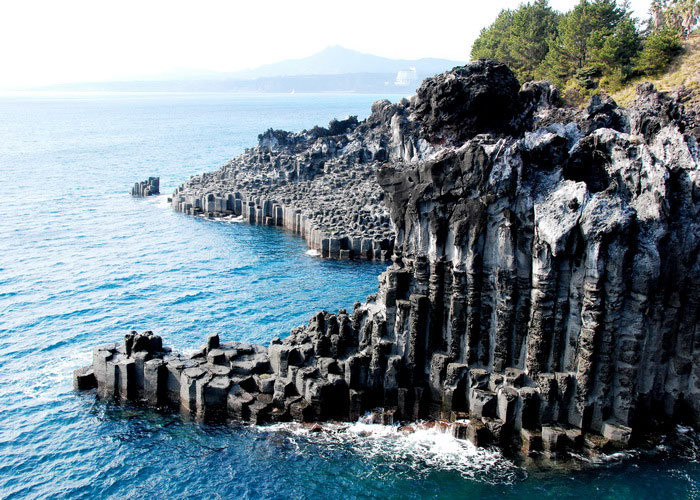
Jeju Volcanic Island and Lava Tube System is a large area located on Jeju Island in Korea.Jeju Island is the largest and most famous island of kimchi. The island has a length of 41 km and a width of 73 km. The climate on the island is relatively mild, the hottest months are not over 33 degrees Celsius. It is formed from volcanic eruptions so rock is everywhere on Jeju Island. It is very special that kicking on Jeju Island is black, spongy, light and very absorbent. Stone is everywhere on the road, used by people as fences around the house and around tangerine gardens - a famous specialty of the island.
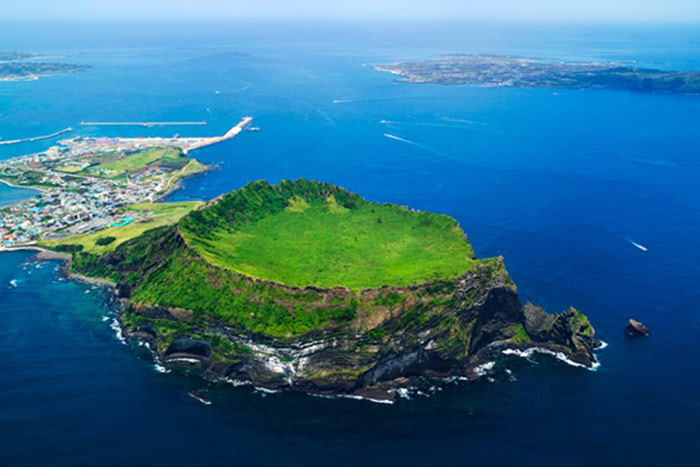
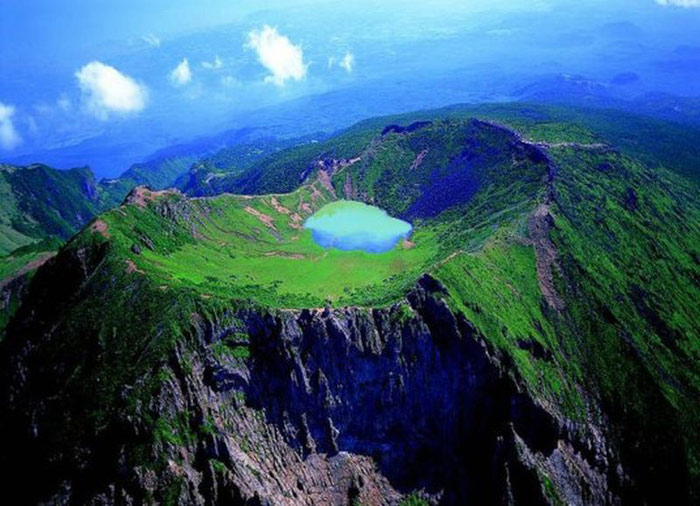
Jeju Volcanic Island and Lava Tube System is a large area of 18,846ha with 3 main locations: Geomunoreum , considered the most beautiful lava tube system in all caves around the world. with the roof and the base made of colorful carbonate and lava walls darker. Seongsan Ilchulbong's round stone mountain is shaped like a fortress rising high above the sea surface, creating a magnificent sight. Finally there is Mount Halla , the highest mountain in Korea with many waterfalls, multi-shaped rocks and a crater now covered with a lake. This area, not only is an extremely prominent natural landscape, but also a place to store the evidence of the history of the earth's formation through its characteristics and its development process.
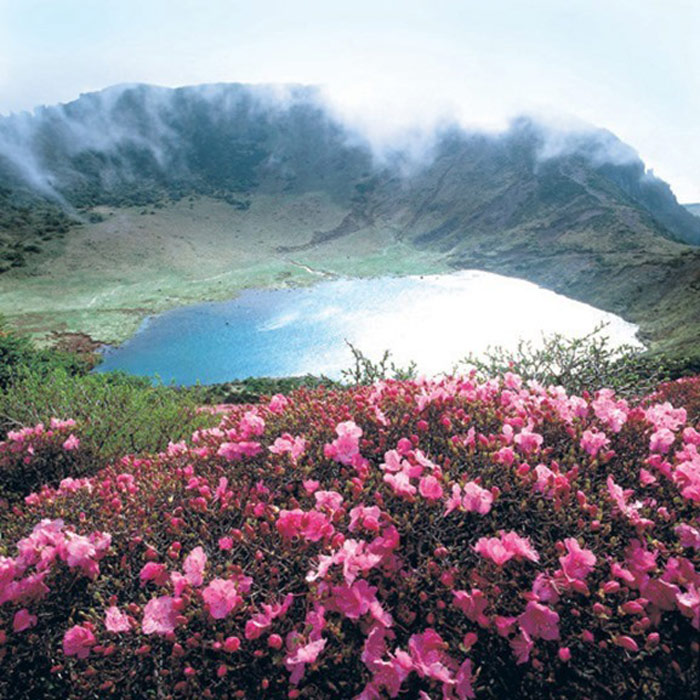
It can be said that Jeju Volcanic Island and Lava Pipe System are a legacy made up of three separate components as mentioned. This area was recognized as a World Natural Heritage by Unesco because of the unequaled quality of lava tube system in Geomunoreum as well as the diversity and easy access to volcanic characteristics in two locations. remaining points. This heritage has contributed an important and unique part to scientists, geologists all over the world to have more knowledge about the formation and development of volcanoes around the world.


There are two criteria that UNESCO chooses to decide where this World Natural Heritage is the criteria (vii) and criteria (viii).
Criterion (vii): According to the evaluation table, the system of Geomunoreum lava tube, which is considered the most beautiful cave system in the world , has an extremely outstanding beauty even when compared to many caves. other beautiful in the world. It offers a unique image with caves and caverns decorated with colorful carbonate colors while the walls are dark in lava. Seongsan Ilchulbong rocky mountain looks like a rising fortress. Off the sea is an extremely impressive. Meanwhile, Mount Halla makes the surrounding landscape more poetic and attractive thanks to the structure and color of the season, waterfalls, rocks with many different forms, adjacent rocky ridges and above all, the view from above at the mouth of the volcano is now the lake.

According to the second criterion (viii): Jeju also has a special value as one of the major shield-shaped volcanoes in the world created on a hot spot in a static continental crust. Jeju stands out thanks to the system of Geomunoreum lava tubes and many caves with protected lava tubes. Besides, the stalagmite system is formed from carbonate to bring a very beautiful and unique landscape. This stalagmite system is not only many but also very diverse and few caves in the world match. The Seongsan Ilchulbong roundabout is also a testament to the structure and characteristics of sediment, making it a top destination for those who want to learn about Surtseyan-style volcanic eruptions .
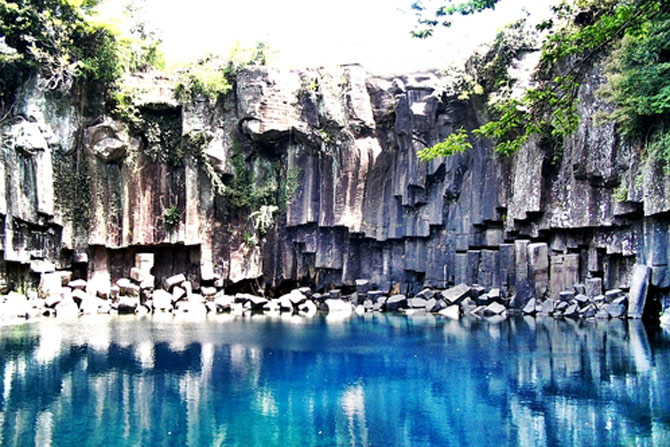
Jeju Volcanic Island Heritage and Mr. Dung Nham System are well managed and used thanks to the government's local management plan in the period of 2006-2010. managing this heritage is how to avoid the effects of agricultural production on the underground environment and how to effectively manage tourists to the island to visit the island.
- Mysterious ghost path on Jeju Island - South Korea
- Detecting giant lava tubes, can cause polarity to reverse the Earth's magnetic field
- Lava swallowed people's homes in Hawaii
- Close-up of the new island formed on the Red Sea
- What happens when volcanic lava flows into the sea?
- Detecting the 'Archway Gate' at the bottom of Ly Son island sea
- Lava falls on a cruise ship in Hawaii, more than 20 people were injured
- Indonesian volcanic lava is green
- Process of collecting molten lava from volcanoes
- Lava tube - a residence on the moon
- Detected many strange lava columns on Mars
- Overwhelmed with volcanic eruptions
 Suzhou classic bonsai garden - China
Suzhou classic bonsai garden - China Chau Nguyen Dynasty
Chau Nguyen Dynasty Thai Son Mountain - World Wonder
Thai Son Mountain - World Wonder Ancient villages of Shirakawa-go and Gokayama
Ancient villages of Shirakawa-go and Gokayama